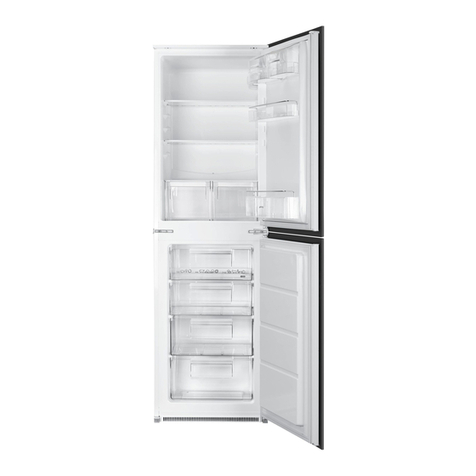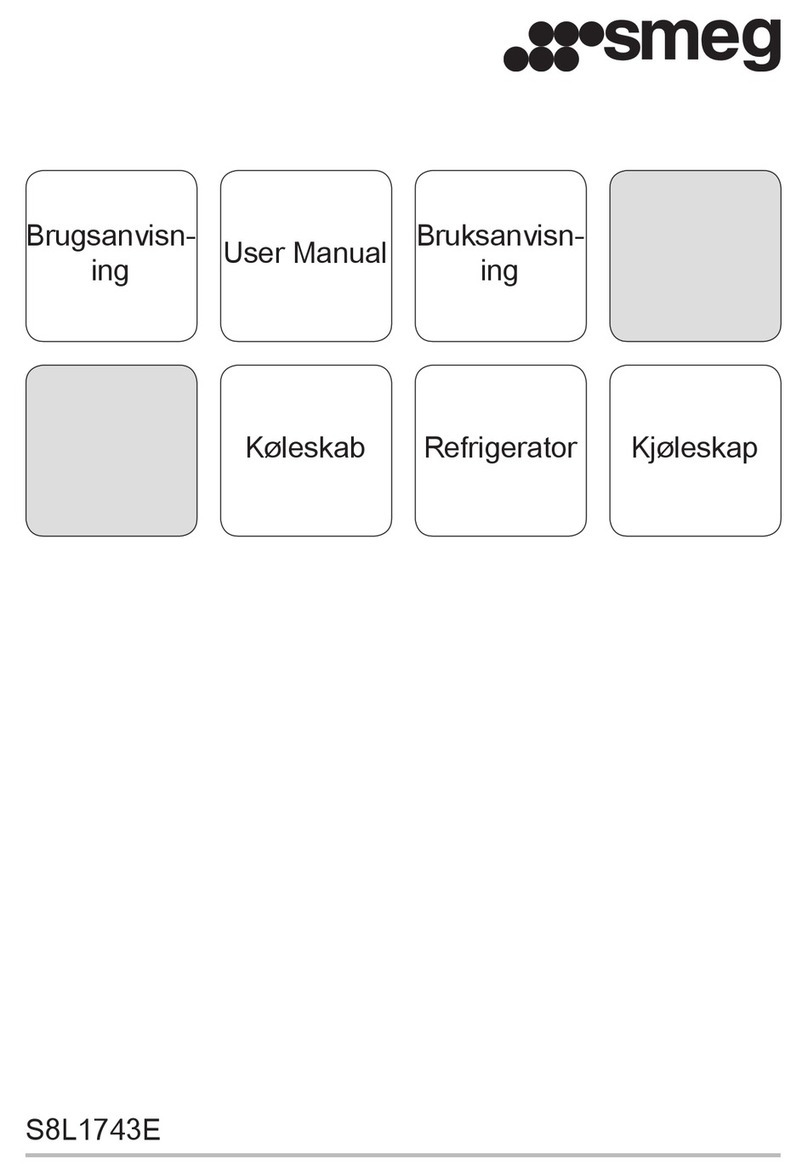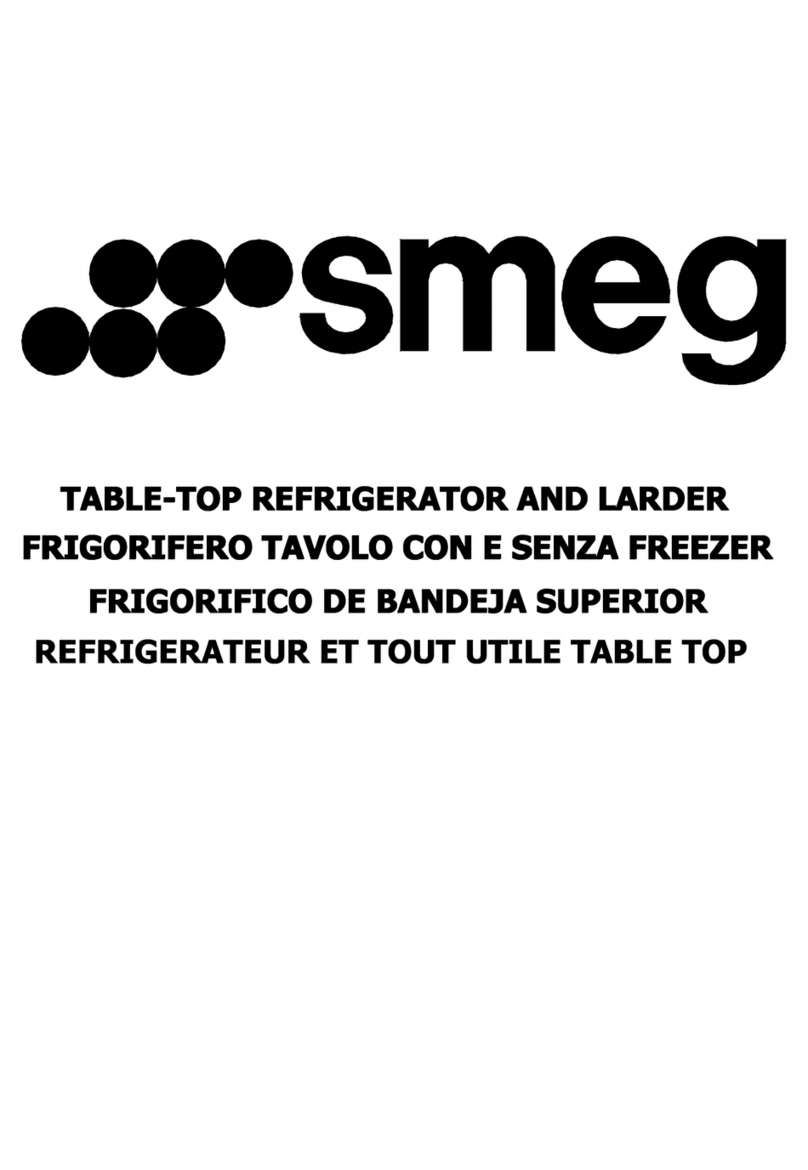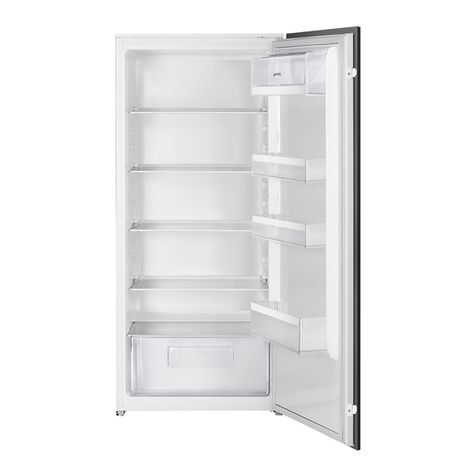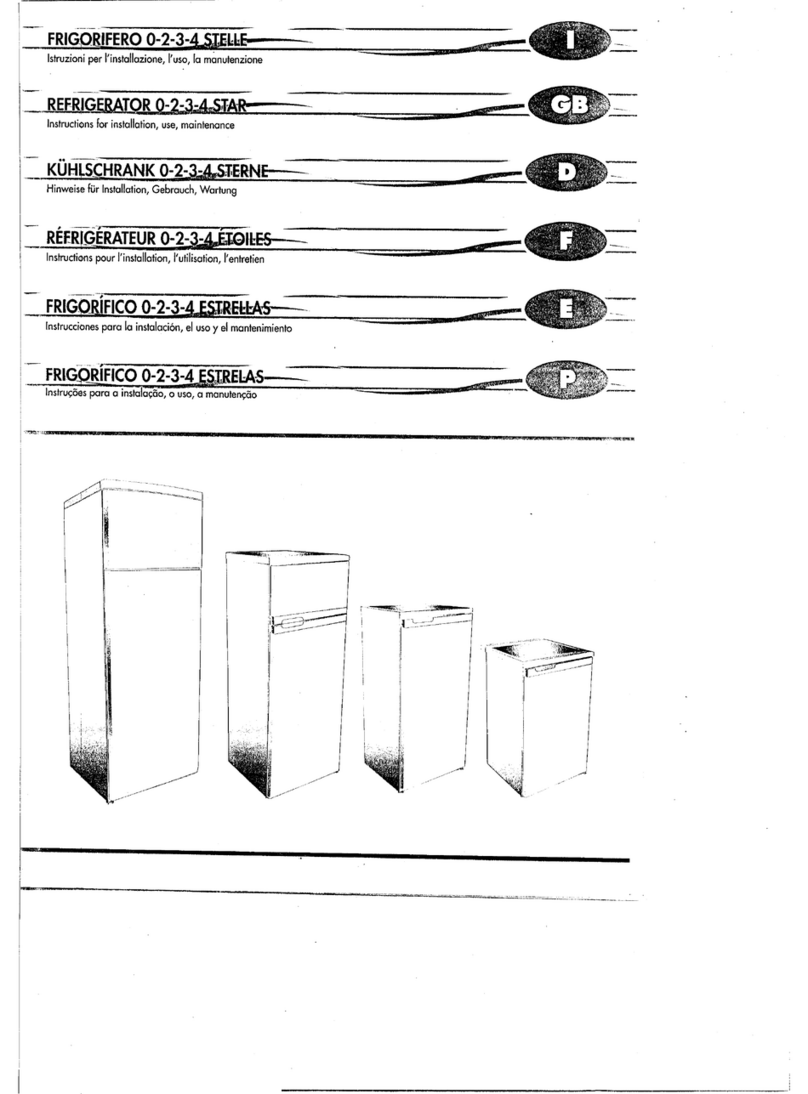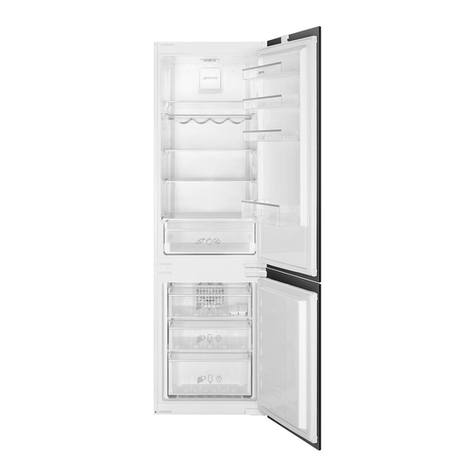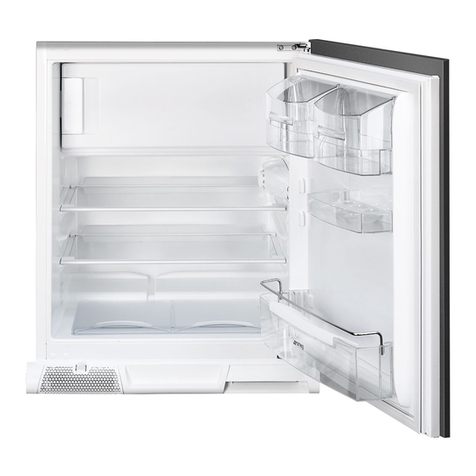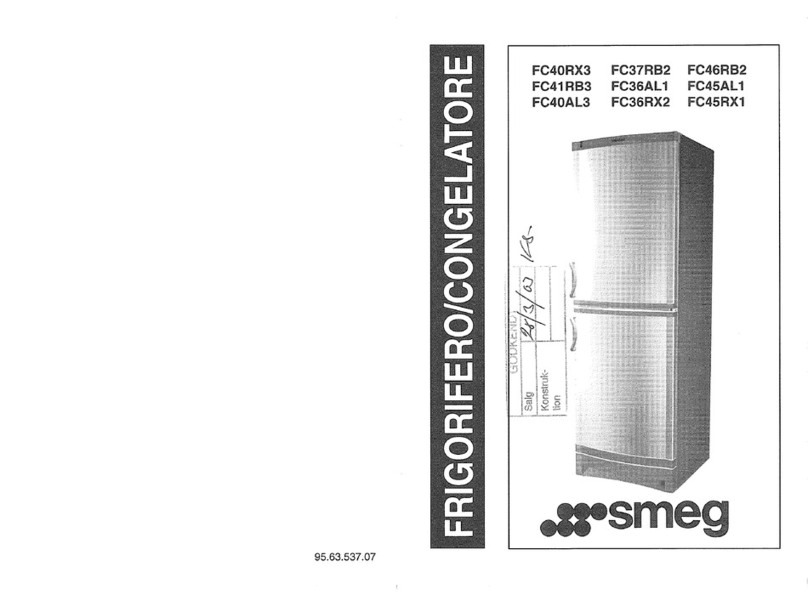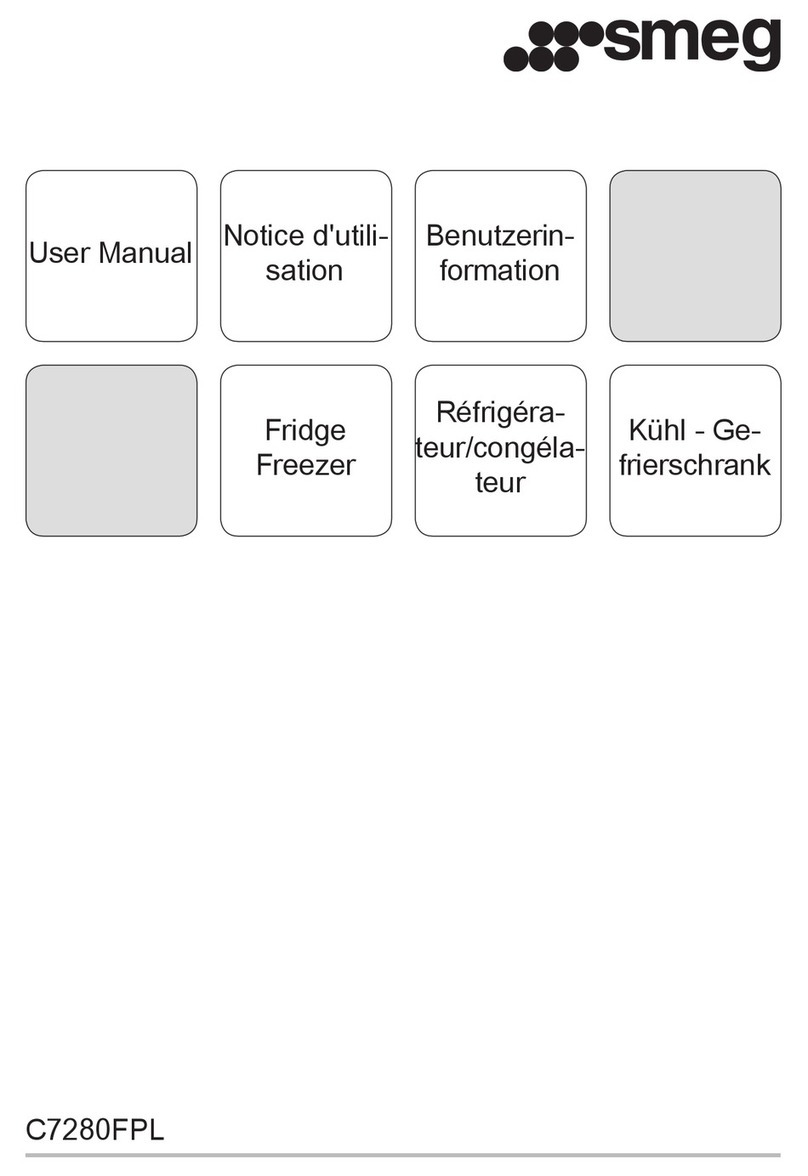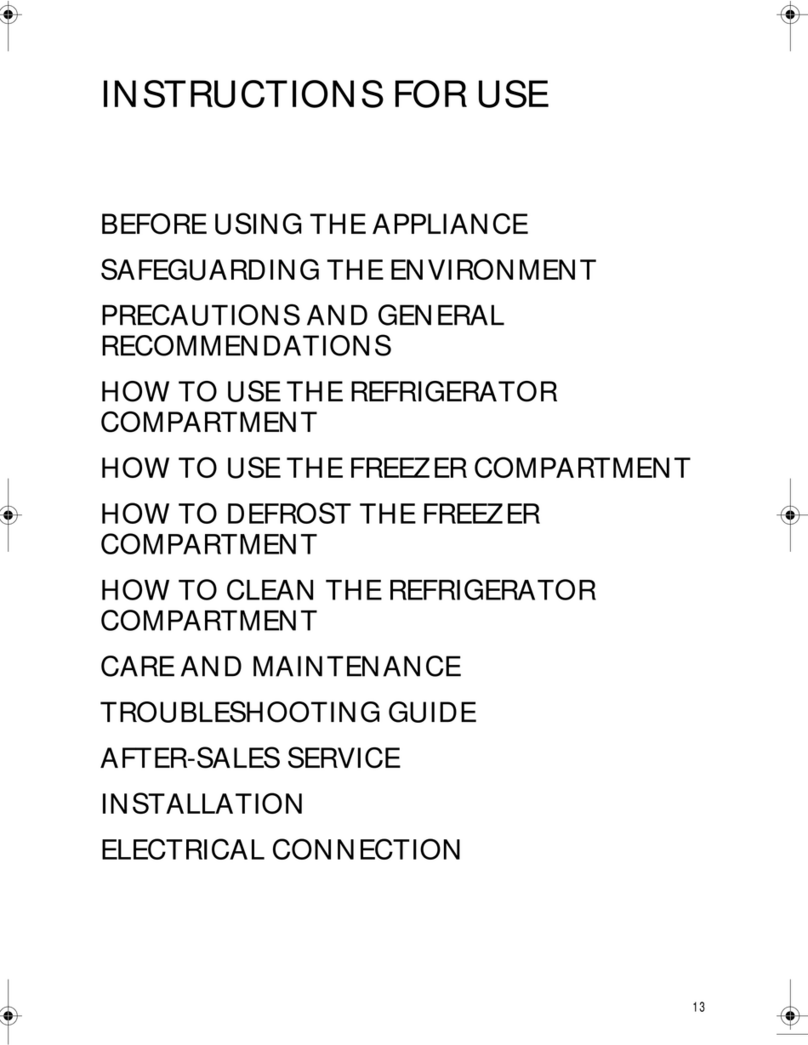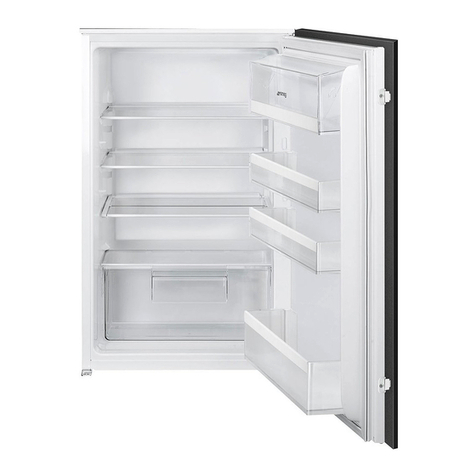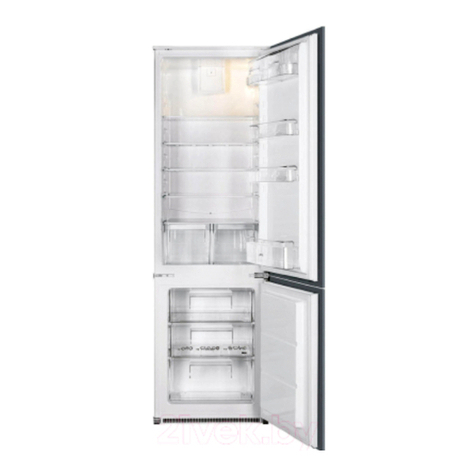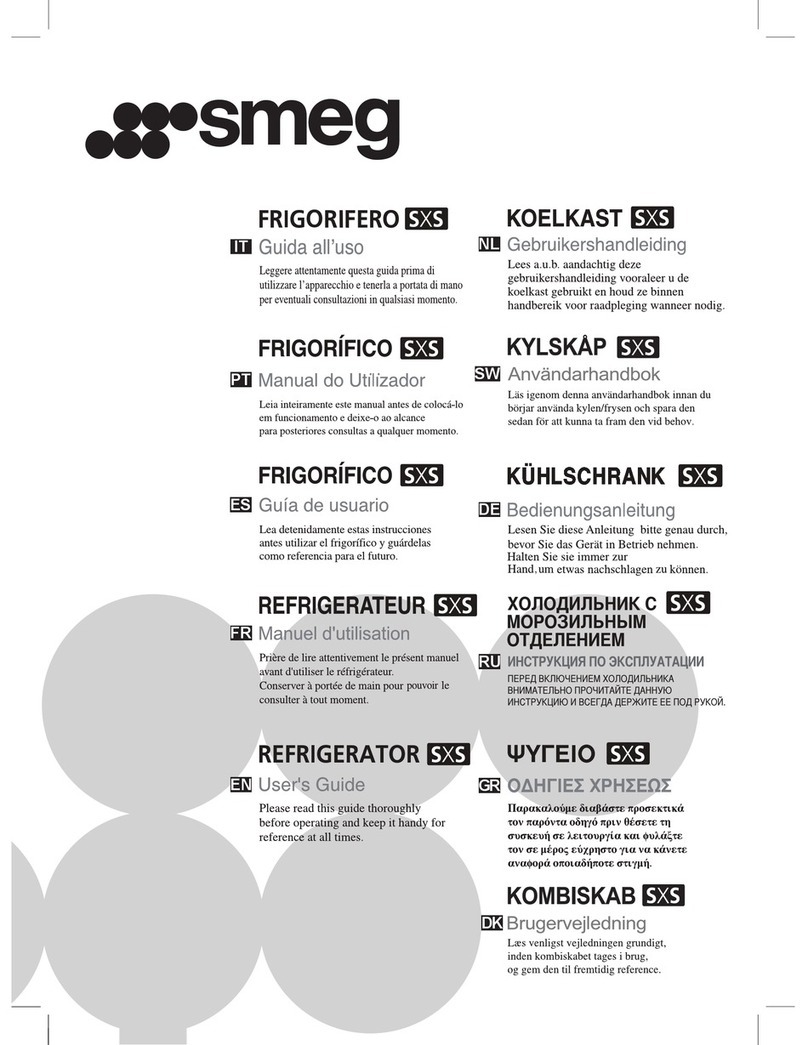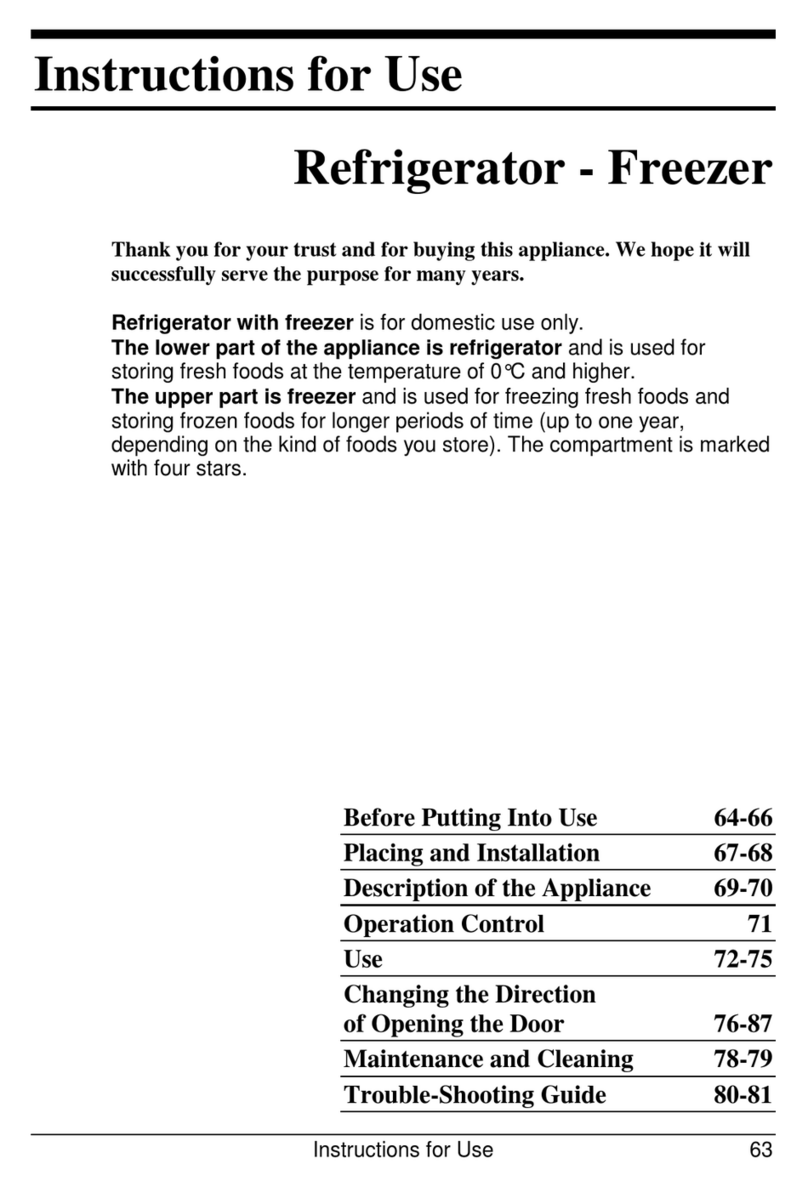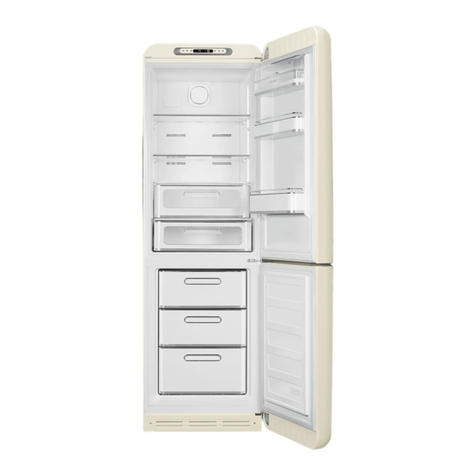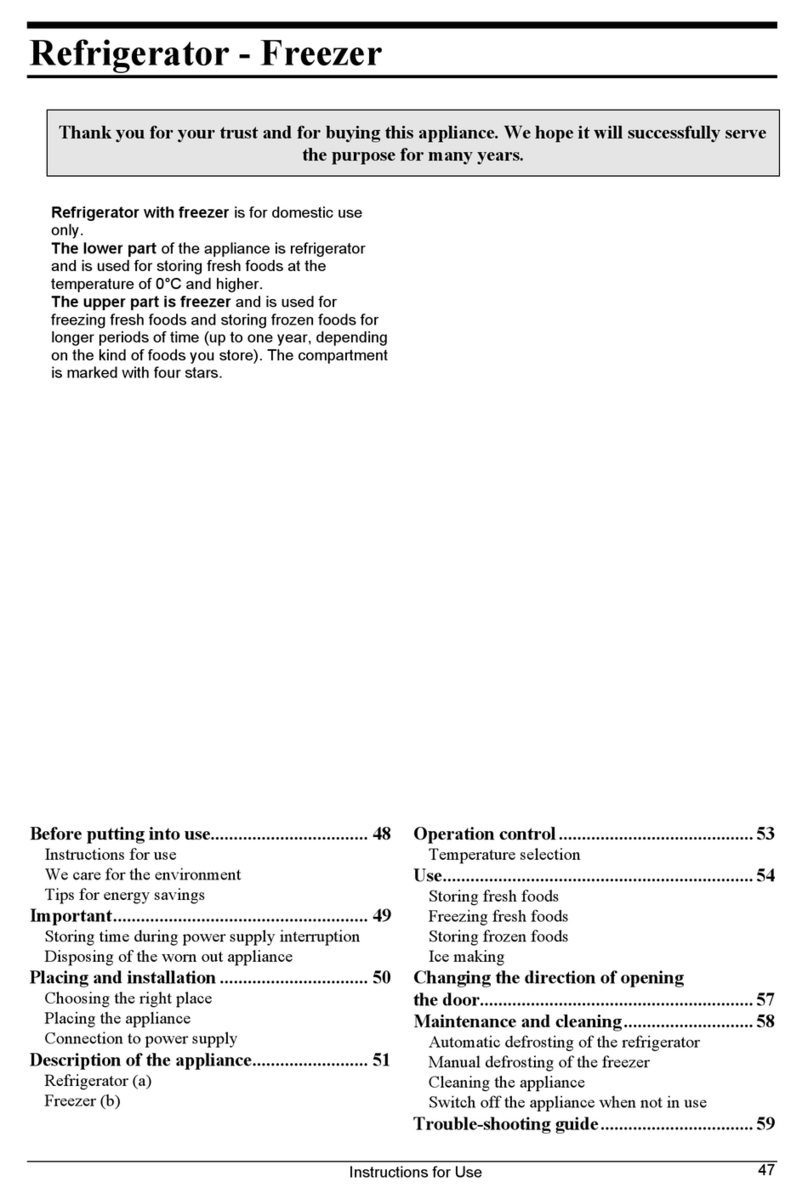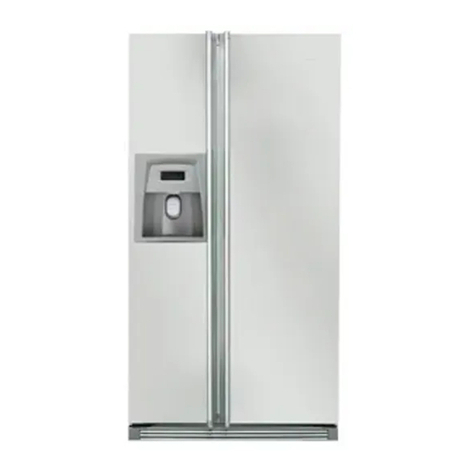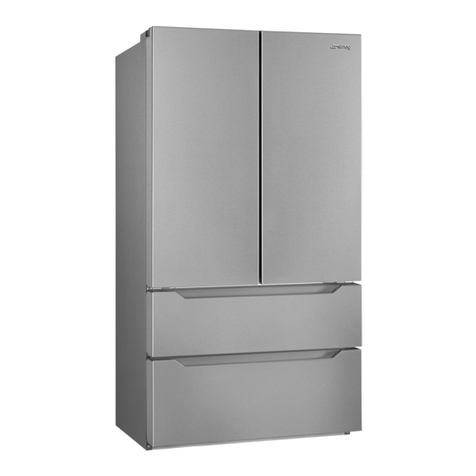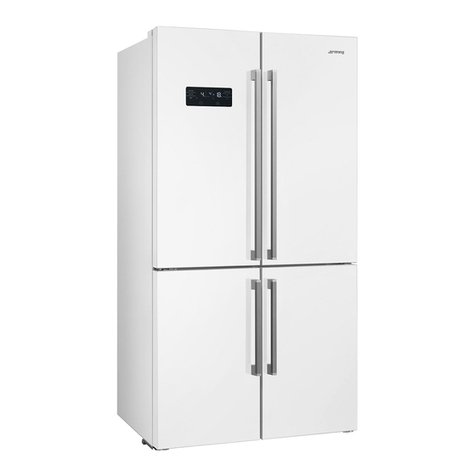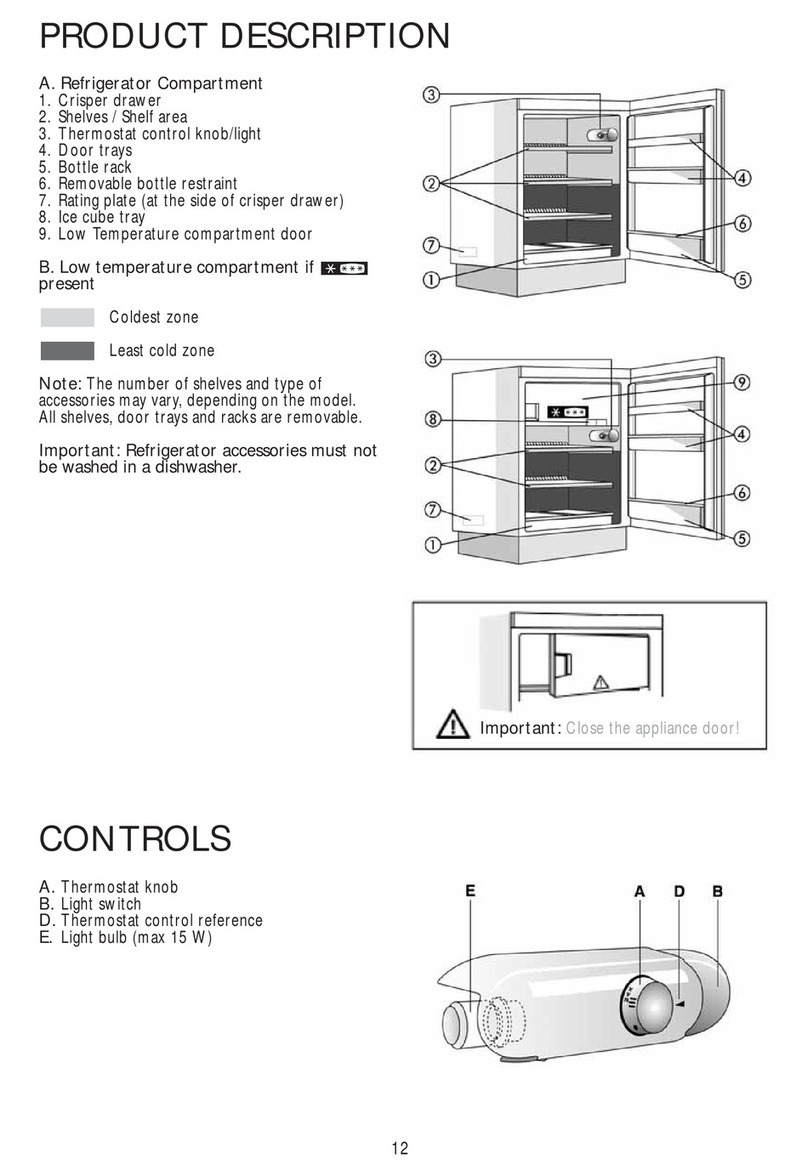
1.1 Warning and Safety Information
Please read the operating and installation instructions carefully! They contain important information on how to install, use
and maintain the appliance. The manufacturer is not liable if you fail to comply with the instructions and warnings.
This appliance is intended to be used in household and similar applications such as staff kitchen areas in shops, offices
and other working environments; farm houses and by clients in hotels, motels and other residential type environments; bed
and breakfast type environments; non- retail or commercial catering applications.
The appliance must be unplugged if not in use and before carrying out user maintenance on the appliance or the
installation of an accessory.
Do not use electrical appliances inside the food storage compartments of the appliance.
Refrigerant and cyclopentane foaming material used for the appliance are flammable. Therefore, when the appliance
is scrapped, it shall be kept away from any fire source and be recovered by a special recovering company with
corresponding qualification other than be disposed by combustion, so as to prevent damage to the environment or any
other harm.
If damage has occurred and refrigerant escapes, keep naked flames and/or ignition sources away from the appliance,
thoroughly ventilate the room for several minutes, switch off the appliance and pull out the mains plug and contact the
customer service department.
To avoid contamination of food, please respect the following instructions:
Opening the door for long periods can cause a significant increase of the temperature in the compartments of the
appliance.
Clean surfaces regularly and accessible drainage systems.
Store raw meat and fish in suitable containers in the refrigerator, so that it is not in contact or may drip onto other food.
If the refrigerating appliance is left empty for long periods, switch off, defrost, clean, dry, and leave the door open to
prevent mold developing within the appliance.
1. SAFETY FIRST
PAGE 1
1.2 Meaning of safety warning symbols
This is a prohibition symbol.
Any incompliance with instructions marked with this symbol may result in damage to the product or
endanger the personal safety of the user.
This is a warning symbol.
It is required to operate in strict observance of instructions marked with this symbol; or otherwise
damage to the product or personal injury may be caused.
This is a cautioning symbol.
Instructions marked with this symbol require special caution. Insufficient caution may result in slight
or moderate injury, or damage to the product.
This manual contains lots of important safety information which shall be observed by the users.
